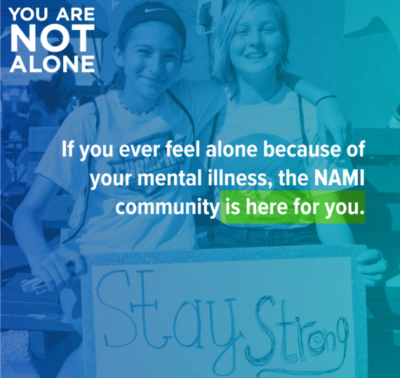
Dr. E. Fuller Torrey quits NAMI
Torrey calls NAMI a Mental Health America “Clone” Embarrassed to belong in advocacy group he once championed.
(9-20-24) Dr. E. Fuller Torrey, who played a crucial early role in helping the National Alliance on Mental Illness become the nation’s largest and most influential mental health organization, is ending his 40 plus-year affiliation with the grassroots group, writing in a recent letter: “NAMI is now a sad shadow of its original self, and I am embarrassed to belong. Please cancel my membership.”
In his open letter (see end of blog post) to NAMI CEO and President Daniel H. Gillison Jr., Dr. Torrey explained: “NAMI functioned as a very effective mental illness advocacy organization for almost 20 years. However, by the turn of the new century, it had become clear that, despite its name, the National Alliance for the Mentally Ill was abandoning its focus on mental illness in favor of mental health issues. But it is even worse since NAMI no longer even distinguishes between mental illnesses and mental health problems.”
He was referring to NAMI’s decision several years ago to begin representing all mental health issues – a so-called “big tent” approach- rather than focusing primarily on “serious mentally illnesses, (SMIs)” defined as schizophrenia, schizophrenia, schizoaffective disorder, bipolar disorder, autism, as well as severe forms of other disorders such as major depression, panic disorder, and obsessive-compulsive disorder.
The DSM-5 TR, lists nearly 300 mental disorders grouped into 20 categories. It recently added “prolonged grief disorder.” Torrey has argued for years that NAMI should stick to focusing on serious brain diseases and not all possible mental ailments.
Looking Back To When NAMI Began

In his letter, Torrey recalled how thrilled he was when NAMI was founded in 1979 by parents, mostly mothers, tired of the “schizophrenic mother” image that blamed them for their children’s maladies.
“Finally, people like my mother had an advocacy group which could provide her with information and support in her attempts to understand my sister’s schizophrenia. In addition, mentally ill individuals who are homeless or incarcerated, and the mental health professionals who provide care for them, would have an advocacy group which could urge federal agencies, such as NIMH and SAMHSA, and state agencies to address their needs.
Torrey explained in his letter that NAMI was not the first national mental health organization. Mental Health America, (MHA) originally called the National Committee for Mental Hygiene, was founded in 1909 by a group of former mental health hospital patients. Traditionally, MHA attracted members who had “lived experience” – a diagnosed mental illness – while NAMI attracted parents and caregivers. Torrey accused NAMI of mimicking MHA:
(NAMI) appears to be transitioning to becoming another Mental Health America ... NAMI now identifies itself as “the nation’s largest grassroots mental health organization.” (almost identical language as MHA’s credo – ‘a national non-profit dedicated to the promotion of mental health.’” )
Drilling down, Torrey continued:
NAMI’s recent newsletter focused on NAMI’s “Back to School Guide” for children who may have “back to school jitters”. The guide includes a number of fact sheets, posters, and other resources “to foster healthy mental wellness habits” in children. NAMI’s “Back to School Guide” is remarkably similar to Mental Health America’s “Back to School Toolkit”. Which also includes fact sheets, posters, and other resources similar to those offered by NAMI. NAMI has thus become a Mental Health America clone.
But it is even worse since NAMI no longer even distinguishes between mental illnesses and mental health problems. Its website admits that “we intentionally use the terms ‘mental health conditions’ and ‘mental illnesses’ interchangeably”. Thus, NAMI apparently no longer distinguishes between problems such as ‘back to school jitters’ and the fact that 28% of severely mentally ill homeless individuals use garbage cans as a secondary food source with 8% using it as their primary food source.
A Not Surprising Breakup
This is not the first time that Torrey has accused NAMI of abandoning its original focus on brain diseases in favor of all mental health problems. There is a marked difference, he’s written, between serious mental illnesses and ailments of the “worried well” whom he describes as Americans who seek help simply because they have difficultly getting along with other people.
His resignation from NAMI marks the end of an era within NAMI and reveals how much the organization has changed. In a 2001, Washington Post story, NAMI’s first director, Laurie Flynn, discussed how instrumental Dr. Torrey’s support was to the group when it started.
“Torrey had just published “Surviving Schizophrenia,” a guide for patients and their families. When he appeared on Phil Donahue’s TV show to promote it, he urged people seeking help to contact the alliance, which was then a fledgling organization with fewer than 50,000 members, most of them the parents of mental patients. The result was this avalanche of mail.
“Nobody had ever said the word schizophrenia on popular television, and people came out of the woodwork seeking help,” Flynn recalls. “For many years, mothers were told they were the cause of the problem, and here comes Fuller Torrey saying, ‘Wait a minute, this isn’t the family’s fault. These are brain diseases.’ Here was a psychiatrist saying, ‘I know what you’re going through because my sister has the problem.’ It’s hard to overemphasize what a hero he was back in the early days.”
Torrey donated the royalties of “Surviving Schizophrenia” to the alliance and he hit the hustings to organize, helping to build the group into a powerful lobbying organization with more than 220,000 members. (2001 figures)
“Weekend after weekend,” Flynn says, “he went out to states where members were organizing chapters and he rallied the troops. Nobody did it better.”
First Signs of Trouble: Rock Star To Outcast
Throughout the 1980s and into the 1990s, Torrey was revered as a NAMI rock star, frequently appearing at its national conventions. But a crack soon surfaced. The dispute was about Torrey’s championing of Assisted Outpatient Treatment laws (AOTs), which permit mental health professionals, under certain conditions, to require individuals diagnosed with a mental illness to accept treatment even if they do not want it. NAMI agreed to endorse AOT laws but Torrey wanted more. He explained that NAMI’s calls for better and more medical treatments were important, but treatments were meaningless if there were legal barriers keeping the seriously mentally ill from getting help. 
Torrey urged NAMI to create a “treatment advocacy center” within its ranks, primarily to lobby for the passage of AOT laws. Three NAMI board members, at the time, supported his proposal. They were legendary NAMI figures: Fred Frese, D. J. Jaffe, and Carla Jacobs. But NAMI’s affiliates (local chapters) voted “no confidence” in his idea and stopped it from being implemented.
Undeterred, Torrey reached out to Vada Stanley and her husband, Ted, and asked them for financial support. The Stanleys were billionaires, having made their fortune selling collectables, and, as I explain in my book, they had become close with Dr. Torrey after he helped them get treatment for their adult son, Jonathan, after he had a mental breakdown. Ted Stanley later credited Torrey for saving his son’s life. In 1998, the Stanleys agreed to help finance a new non-profit, The Treatment Advocacy Center, with Torrey as its founder. They couple already had created another one of Torrey’s projects, the Stanley Medical Research Institute, to study the brain and had put him in charge. Overall, the Stanley couple would donate more than $825 million dollars to different mental health ventures – money that some in NAMI’s leadership believed should and would have gone to NAMI if Torrey had not created TAC. NAMI Board members Frese, Jaffe, and Jacobs all joined the first TAC board.
Torrey further alienated NAMI leadership in December 1999 when he used NAMI to publish a scathing attack against the National Institute of Mental Health, which he complained was spending too little money for research on severe mental illnesses while funding studies on such topics as “Coping With Change in Czechoslovakia” and the mating habits of the eastern bluebird. Fearful of alienating NIMH and losing federal funding projects, NAMI immediately tried to distance itself from Torrey’s actions.
By the time I became a NAMI member in 2006, the rift between Torrey and his followers and NAMI had widened. More and more individuals with mental illnesses – peers – were joining NAMI and some of them were strongly anti-AOT because they objected to any form of forced treatment. One influential peer serving on the NAMI board threatened to quit if Torrey was invited to speak at the group’s annual convention.
Last Ditch Effort To Change NAMI’s Direction
In 2013, then NAMI Board President Keris Jan Myrick, a strong peer advocate, startled many in NAMI when she arranged for author/journalist Robert Whitaker to speak at NAMI’s San Antonio convention. Whitaker had questioned the effectiveness of anti-psychotics and had launched the Mad In America website which often featured bloggers who strongly opposed AOT and frequently vilified Torrey in their writings.
Four years later, backers of Torrey tried to change the direction of NAMI by undertaking a palace coup. At that year’s convention, NAMI was scheduled to fill five seats on its national board. D. J. Jaffe and three others campaigned on what they called a “Focus on Serious Mental Illness” platform. Their actions prompted President Steve Pitman to write a letter before the election endorsing a “big tent” branding approach. Board Member Jim Hayes said someone who was having their life impaired by anxiety was just as worthy of help as an individual with an SMI. None of the four challenging the “big tent” re-branding was elected.
Writing for this blog in 2020, Luna Greenstein, a senior manager at NAMI explained its rebranding goal.
“We are truly the only mental health organization that wants to “be everything to everyone.” While this isn’t always possible, we certainly try.”
Whether NAMI has abandoned the seriously mentally ill by expanding its tent might be debatable, but what can’t be argued is that NAMI’s opening its doors to all mental health problems has increased its reach and enriched its coffers. COVID prompted more attention on mental health which dovetailed with NAMI’s expansive branding. According to Guidestar, which tracks non-profits tax records, in 2023, NAMI reported $48.4 million in gross receipts and listed assets of $78.7 million. In 2011, before the NAMI “big tent” expansion, it was bringing in $9.4 million in gross receipts.
Torrey’s Departure: Afflicting the comfortable and comforting the afflicted
Will Torrey’s letter, criticism and departure make a difference? Many of his strongest supporters already left NAMI for TAC. And he has been absent from most NAMI national events for some time. Regardless, being outside the door of an organization that he spent decades helping build will not blunt his criticism. In that Washington Post profile of Torrey, then-NAMI director Flynn stated in 2001:
“Ten years ago, we were outside the door pounding to get in. Now we’re at the table and people expect us to have good manners. But Fuller is still — and always will be — outside the door, pounding to get in.”
Cancel My Membership Letter From Dr. Torrey:
Daniel Gillison, CEO National Alliance for the Mentally Ill (NAMI)
Dear Mr. Gillison,
I was recently asked by a friend if I was still a member of NAMI and was embarrassed to answer that I was. In fact, I have been a member for over 40 years and can clearly remember how pleased people were to have a new advocacy organization which was focused on mental illnesses, especially severe mental illnesses. NIMH, at the request of Congress, defined severe mental illness to include schizophrenia, schizoaffective disorder, bipolar disorder, autism, “as well as severe forms of other disorders such as major depression, panic disorder, and obsessive-compulsive disorder.”1 Finally, people like my mother had an advocacy group which could provide her with information and support in her attempts to understand my sister’s schizophrenia. In addition, mentally ill individuals who are homeless or incarcerated, and the mental health professionals who provide care for them, would have an advocacy group which could urge federal agencies, such as NIMH and SAMHSA, and state agencies to address their needs.
Although NAMI was the first advocacy group for mental illness in the U.S., there had been an advocacy group for mental health issues since 1909. It was originally called the National Committee for Mental Hygiene and is now known as Mental Health America. It claims to be “the Nation’s leading national non-profit dedicated to the promotion of mental health” and has little interest in mental illness, especially severe mental illness.
NAMI functioned as a very effective mental illness advocacy organization for almost 20 years. However, by the turn of the new century, it had become clear that, despite its name, the National Alliance for the Mentally Ill was abandoning its focus on mental illness in favor of mental health issues. It appeared to be transitioning to becoming another Mental Health America.
A recent NAMI newsletter indicates that this transition is complete. NAMI now identifies itself as “the nation’s largest grassroots mental health organization.” The newsletter focused on NAMI’s “Back to School Guide” for children who may have “back to school jitters”. The guide includes a number of fact sheets, posters, and other resources “to foster healthy mental wellness habits” in children. NAMI’s “Back to School Guide” is remarkably similar to Mental Health America’s “Back to School Toolkit”. Which also includes fact sheets, posters, and other resources similar to those offered by NAMI. NAMI has thus become a Mental Health America clone.
But it is even worse since NAMI no longer even distinguishes between mental illnesses and mental health problems. Its website admits that “we intentionally use the terms ‘mental health conditions’ and ‘mental illnesses’ interchangeably”. Thus, NAMI apparently no longer distinguishes between problems such as ‘back to school jitters’ and the fact that 28% of severely mentally ill homeless individuals use garbage cans as a secondary food source with 8% using it as their primary food source2.
NAMI is now a sad shadow of its original self, and I am embarrassed to belong. Please cancel my membership.
Sincerely,
Fuller Torrey, M.D.
References:
-
Health care reform for Americans with severe mental illnesses: report of the National Advisory Mental Health Council. Am J Psychiatry. 1993;150(10):1447-1465. doi:10.1176/ajp.150.10.1447
-
Gelberg L, Linn LS. Social and physical health of homeless adults previously treated for mental health problems. Hosp Community Psychiatry. 1988;39(5):510-516. doi:10.1176/ps.39.5.510



